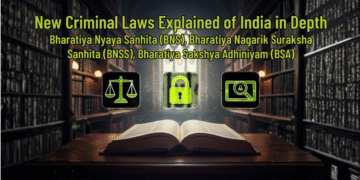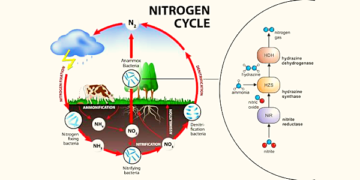The word “intellectual property” first appeared in the 19th century. However, it wasn’t until the 20th century that it was accepted into international legal systems. This post will teach you what IPR stands for, meaning the full form of IPR, Types of Intellectual Property Rights. The importance of intellectual property rights and other necessary details. This is a key topic for the UPSC prelims and mains, so read it carefully. Let’s get started.
What is the Meaning of Intellectual Property Rights (IPR)?
- Patents, copyrights, and trademarks all fall under the category of intellectual property rights. Intellectual property rights refer to a person’s ownership of their intellectual inventions.
- In addition, You have the legal right to safeguard your intellectual property, including innovations, artistic and literary works, designs and symbols, and trade names and pictures.
- Intellectual property rights holders have a time-limited monopoly on the use of property or items.
- IPR strikes the correct balance between innovators’ interests and the greater public good, stimulating innovation as well as making it valuable to society.
- These rights are detailed in Article 27 of the Universal Declaration of Human Rights, as a result, which states that creators of scientific, literary, or artistic works have the right to have their moral and material interests protected.
- The earliest treaties to recognize the value of intellectual property were the Paris Convention for the Protection of Industrial Property (1883) and the Berne Convention for the Protection of Literary and Artistic Works (1885). (1886). Both agreements are administered by the World Intellectual Property Organization (WIPO).
We have covered the majority of the important UPSC exam subjects for all UPSC aspirants. Also, Don’t forget to visit our website for free UPSC study materials by clicking here. Further, Let us now discuss Intellectual Property rights IPR’s history, Full form, and what it stands for.

The History of IPR and What It Stands For:
- The Paris Convention of 1883 was the 1st major international agreement aimed at assisting creators in ensuring that their intellectual property is protected in other countries. Patents, trademarks, and industrial designs are all covered by the Paris Convention.
- The goal of the Berne Convention, which was established in 1886, was to guarantee creators the ability to manage and receive compensation for their creative works on a global scale. Novels, short tales, songs, musicals, drawings, and paintings are all covered at the Berne Convention.
- The first worldwide IP filing service was started with the adoption of the Madrid Agreement in 1891.
- BIRPI (1893)The United International Bureaux for the Protection of Intellectual Property – better known by its French acronym, BIRPI – united to become WIPO’s immediate precursor, the United International Bureaux for the Protection of Intellectual Property.
- In 1970, the WIPO convention took effect, and BIRPI became WIPO. It became a specialized agency of the United Nations (UN) in 1974.
Now that we’ve learned about the meaning and history of IPR, let’s look at the full form of IPR and what it stands for. IPR stands for Intellectual Property Rights. Further, Let’s look at why it’s important, as well as the different types and other details.
What are the types of Intellectual Property in India?
Intellectual property rights include patents, copyright, trade dress, industrial design rights, trademarks, plant variety rights, geographical indications, and trade secrets. Also, there are plenty of others.
Copyright
- Copyright is a legal word that describes creators’ rights to their literary and artistic works.
- Books, audio, art, sculpture, and films are among the works covered by copyright, including computer programs, databases, ads, maps, and technical drawings.
- Sound recording artists and producers will have their work protected for at least 50 years, Also, while broadcasting organizations will have their work protected for at least 20 years.

Trademark
- A trademark is a symbol that differentiates the goods or services of one business from those of another.
- It stems back to the days when artisans used their signature or “mark” to sign their work.
Patent
- Patents will be granted for all inventions, whether items or processes, in all technical disciplines, as long as they are new, include an innovative step, and be used in industry.
- Patent owners will be able to assign or transfer their patents through succession as well as enter into licensing agreements.
- The agreement stipulates that patents be protected for a period of 20 years.
Geographical Indications (GI)
- Geographical indications and origin are labels applied to goods with a distinct geographical origin and characteristics, reputations, or characteristics that are fundamentally linked to that location.
- A geographical indicator typically contains the names of the item’s origin. Darjeeling tea, Tezpur litchi, Kashmir saffron, and so on.
Industrial Design
- The ornamental or aesthetic component of an article is defined by industrial design.
- A design can be made up of 3- dimensional elements like an article’s shape or surface or two-dimensional elements like patterns, lines, or color.
Trade secrets
- Intellectual property rights on confidential knowledge that can be sold or licensed are known as trade secrets.
- Unauthorized acquisition, use, or exposure of such confidential info by others in a manner inconsistent with ethical commercial practices is considered an unfair practice and a misuse of trade secret protection.

Why IPR is Important?
- The existing IPR regime is partly responsible for India’s current status as a global pharma hub. Several multinational pharmaceutical corporations have outsourced research and development (R&D) to Indian national laboratories.
- The Supreme Court’s historic 2013 judgment (Novartis vs. Union of India) is significant because it ended the pharmaceutical industry’s practice of just changing some constituent elements to extend the patent duration. This benefited the average person by ensuring that life-saving pharmaceuticals were affordable.
- The Farmers’ Rights and Plant Variety Protection Act (2001) helps private enterprises recently joined the market to develop new types and high-yielding plants. These businesses anticipate that the plant varieties they develop will be protected to some extent.
- IP increases the value of a company. Therefore IPR helps a company sell its products and services.
- The company will have an easier time obtaining funds.
- Also, Intellectual property rights increase export opportunities, as well as Improved IP regimes, help India become a global innovation leader. It is important to the success of Start-up India, Make in India, as well as Design in India initiatives.
India & Intellectual Property Rights (IPR)
Acts in India Regarding Intellectual Property Rights:
- The 1957 Copyright Act
- Patents Act of 1970
- Trademarks Act of 1999
- The Act of 1999 on Geographical Indications of Goods (Registration and Protection)
- The National Intellectual Property Rights (IPR) Policy was adopted by India as a vision document to guide the country’s future growth of IPRs.
- The Ministry of Commerce’s Department of Industrial Policy and Promotion (DIPP) has been designated as the focal department for coordinating, guiding, and overseeing the implementation and future growth of IPRs in India.
- The ‘Cell for IPR Promotion & Management (CIPAM),’ established under DIPP, aims to serve as a single point of contact for the implementation of the National IPR Policy’s goals.
- On October 15, 2020, the ‘KAPILA’ campaign, which stands for Kalam Program for Intellectual Property Literacy and Awareness, was launched.
- The day was established to commemorate former President Dr. APJ Abdul Kalam’s 89th birthday.
- India is a WTO member and a signatory to the Agreement on Trade-Related Aspects of Intellectual Property Rights (TRIPS Agreement).
- India is also a member of the World Intellectual Property Organization, which is in charge of promoting intellectual property rights protection around the world.
IPR-related WIPO-administered international treaties & conventions

- It is also a signatory to the following significant IPR-related WIPO-administered international treaties and conventions:
- Budapest Treaty on International Recognition of Microorganism Deposits for the Purposes of Patent Procedure
- The Paris Convention on Industrial Property Protection
- The (WIPO) World Intellectual Property Organization was established by a convention.
- Treaty on Patent Cooperation
- The Madrid Protocol is an addendum to the Madrid Agreement on the International Registration of Marks.
- Nairobi Treaty on the Olympic Symbol’s Protection
- The Berne Convention to protect the Literary & Artistic Works.
- Treaty of Washington on Intellectual Property in Integrated Circuits
- The Marrakesh Treaty makes it easier for visually impaired people and those with print disabilities to access published works.
- The Phonogram Producers’ Safeguard Against Unauthorized Multiple copies of Their Phonograms Convention.
Conclusion- Intellectual Property Rights
In conclusion, You’ll discover everything you need to know about Intellectual Property Rights in this post. Also, what is the meaning of IPR, Full form, what does it stand for, what are the different types of IPR, and so on? Above all, don’t forget to go to the UPSC official website. Also, attentively study this essay and write down the key elements. So you can go over them again during your exam.
FAQ- Intellectual Property Rights
The IPR full form stands for: Intellectual Property Rights
The meaning of IPR is the rights granted to individuals over their mind works. For a set amt of time, they usually grant the inventor exclusive rights to exploit his or her creation.
The critical distinction between the two is outlined below.
™- The unregistered trademark ™ is used to market or brand goods.
R- The registered trademark is indicated by an R within a circle. In addition, It’s a term used by the owner of a registered brand.
The Indian cabinet approved the National Intellectual Property Rights Policy on May 12, 2016, Also, to ensure compliance with the Doha Development Round and the TRIPS Agreement.
Editor’s Note | Intellectual Property Rights
In conclusion, we have provided information on intellectual property rights in this article. We also discussed the meaning, full form, types, needs, as well as other IPR information. Furthermore, to acquire the most up-to-date exam info, one must visit the official website. Most importantly, have faith in yourself. Finally, best wishes.







